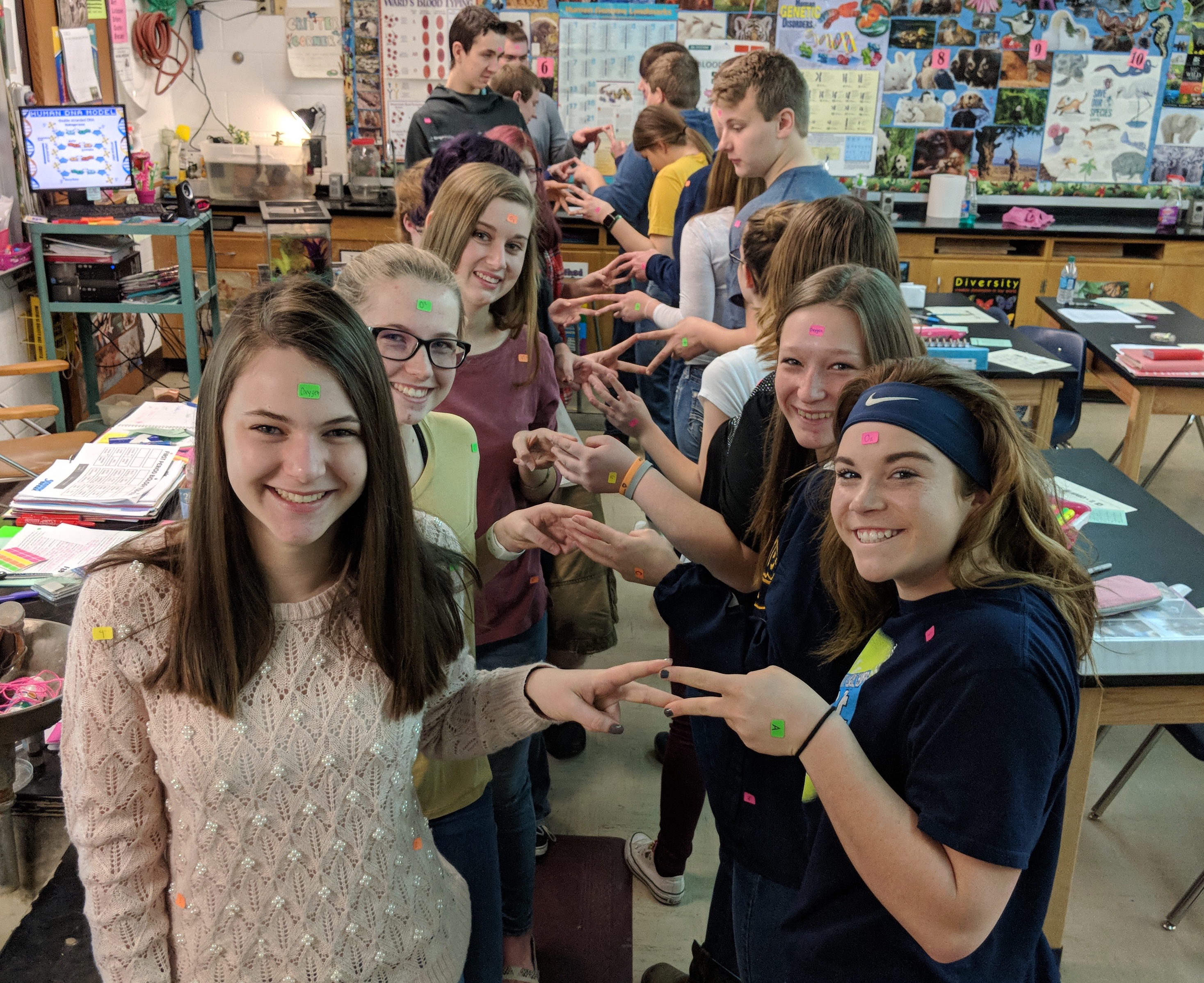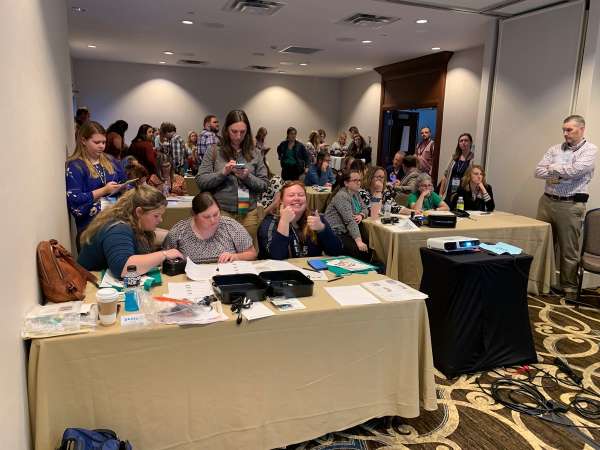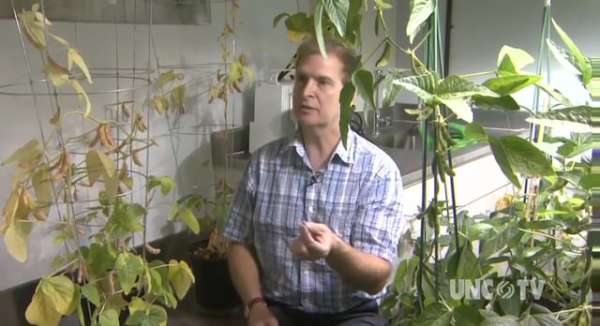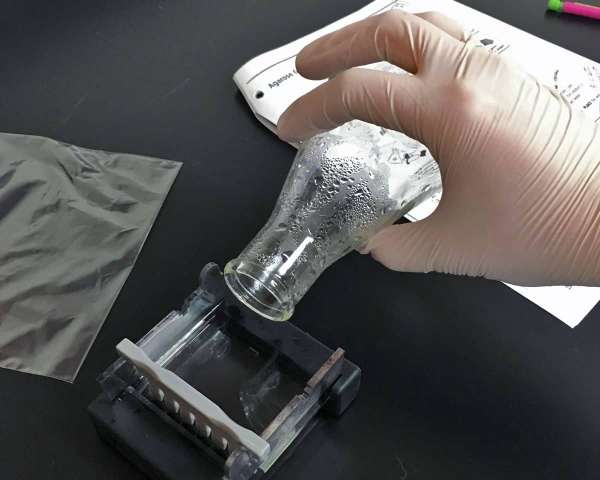Want to move beyond the sedentary science lesson? Melissa Abrams at Hillsdale High School did just that with her grade 9/10 Biology classes. Using an activity from the Ag Biotech workshop, she got her students out of their seats and into a human DNA model!
Abrams’ students had been learning the structure of DNA. They went over the nucleotide components, structure and complementary pairing of the nitrogenous bases, anti-parallel structure of the strands, etc. Then students were given blank stickers on which to write different parts of the DNA nucleotides, then stick them to themselves to label their body parts.

Abrams then called out a DNA sequence and students had to arrange themselves into the single strand of DNA. Once they had modeled one strand, she assigned the task of figuring out how to make the complementary second strand. When they found a student with the correct complementary base, they had to decide if they needed a double or triple hydrogen bond, which they demonstrated with either two or three fingers pointing between them. They also used their other arm to connect to the nucleotide in front of them to represent the phosphodiester bonds, making sure to line up in 5’ to 3’ arrangement.

Abrams said, “My students were really surprised by this. Even though we do a lot of activities in class, they haven’t done anything like this before, where they had to get out of their seats and model things with their bodies. At first students struggled with how to arrange the two strands correctly, but once they figured it out it really helped them comprehend what ‘anti-parallel’ means. In some classes we also had more students in one strand than the other, so it was a good way to introduce the concept of sticky ends. I think writing out the labels to their own stickers, putting them on themselves, etc, will help them remember all of the parts.”
Some of the students wore the stickers around school for the rest of the day and got to explain to others who kept asking what all of the stickers meant. Abrams noted, “It was funny to hear former students jealously say ‘we never got to do that’! Overall, the activity was a fun and quick way to demonstrate some hard-to-understand topics, so I plan to continue this activity in the future and probably build upon it as well—perhaps have some students assigned Uracil so we can create both DNA and RNA strands, then figure out what amino acids they code for.
Abrams said the Ag Biotech workshop was a helpful resource. “This workshop gave me some fresh ideas for topics I’ve been teaching now for 15 years. It is always nice to see a different way to teach something, especially activities like this that are geared more for kinesthetic learners. I loved that the workshop gave me real-life examples as well, pointing specifically to the importance of genetically modified crops to help with food shortages. In a rural community, these kinds of examples really hit home for the kids, especially those who live and work on farms. At the workshop, I was able to have conversations with farmers and scientists, and I was then able to take what I learned and relay some of those important messages and career opportunities to my students.”
There are a few spots left in this year’s Ag Biotech workshop. Join us for great PD and a new approach to your science standards.




Share this